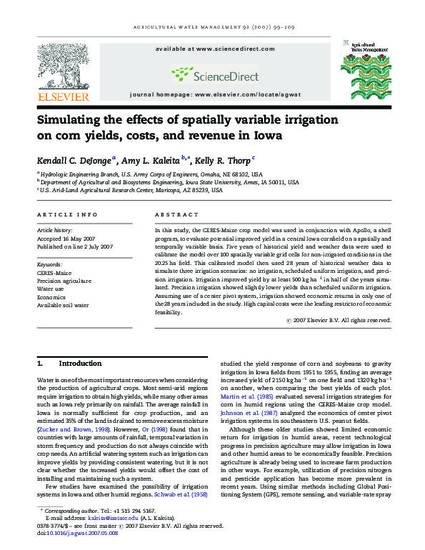
In this study, the CERES-Maize crop model was used in conjunction with Apollo, a shell program, to evaluate potential improved yield in a central Iowa cornfield on a spatially and temporally variable basis. Five years of historical yield and weather data were used to calibrate the model over 100 spatially variable grid cells for non-irrigated conditions in the 20.25 ha field. This calibrated model then used 28 years of historical weather data to simulate three irrigation scenarios: no irrigation, scheduled uniform irrigation, and precision irrigation. Irrigation improved yield by at least 500 kg ha−1 in half of the years simulated. Precision irrigation showed slightly lower yields than scheduled uniform irrigation. Assuming use of a center pivot system, irrigation showed economic returns in only one of the 28 years included in the study. High capital costs were the leading restrictor of economic feasibility.
Available at: http://works.bepress.com/amy_kaleita/35/

This article is from Agricultural Water Management 92, no. 1–2 (16 August 2007): 99–109, doi:10.1016/j.agwat.2007.05.008.